#lm 1964
Photo
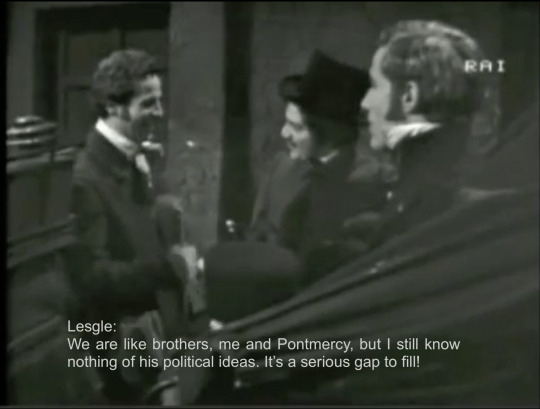
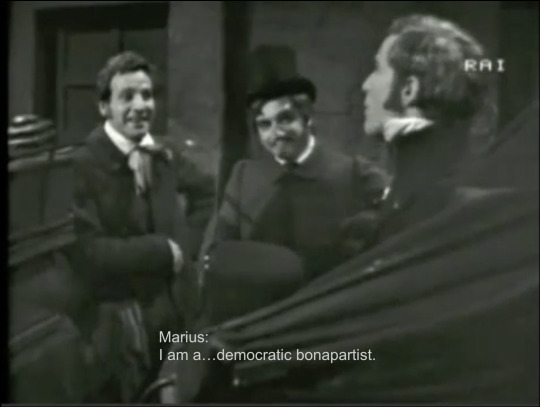

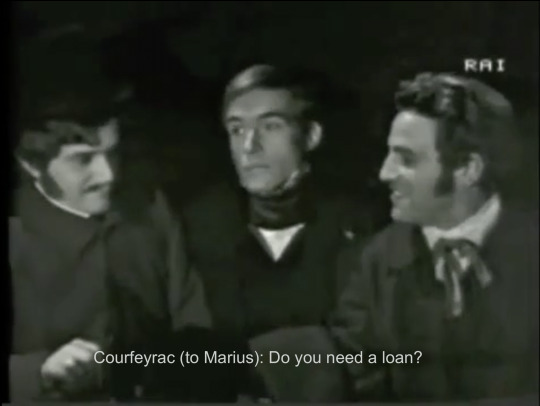
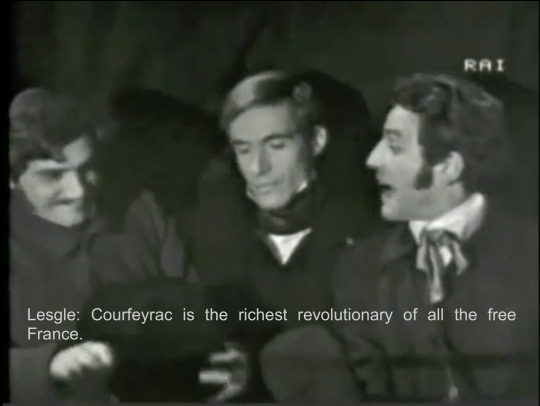

Scenes from Episode 6, “I FIGLI DI WATERLOO” (Waterloo’s sons), of I Miserabili (1964) dir. Sandro Bolchi. Orazio Orlando as Lèsgle/Bossuet, Stefano Varriale as Courfeyrac, and Roberto Bisacco as Mario (Marius).
Lèsgle and Courfeyrac teasing Marius about his vague political ideas and teasing one another.
Lèsgle has a much larger role in this adaptation than others
88 notes
·
View notes
Text

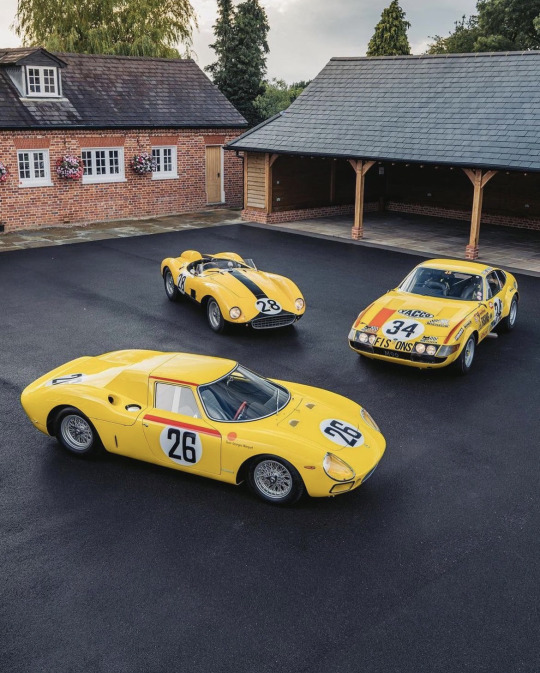

1964 Ferrari 250 LM
#1964 Ferrari 250 LM#fitment#static#stance#modified#tuning#imports#tuner#retro rides#lowered cars#overhead shots#exotics#60s race cars#vintage racing car#classic#interior
666 notes
·
View notes
Text






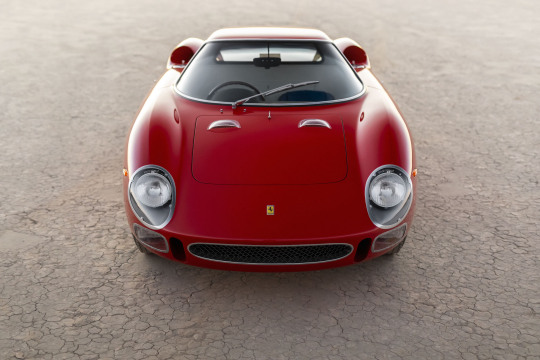


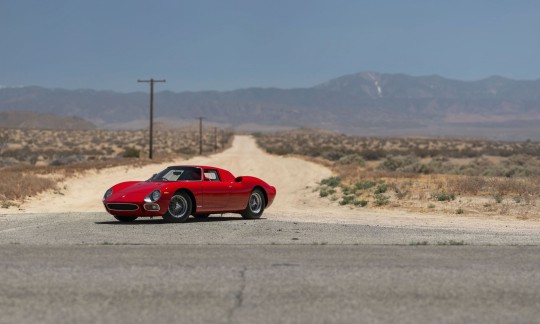
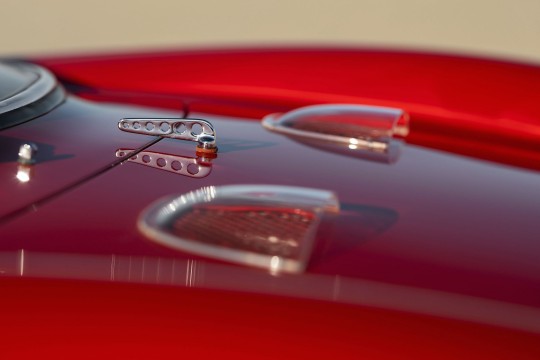
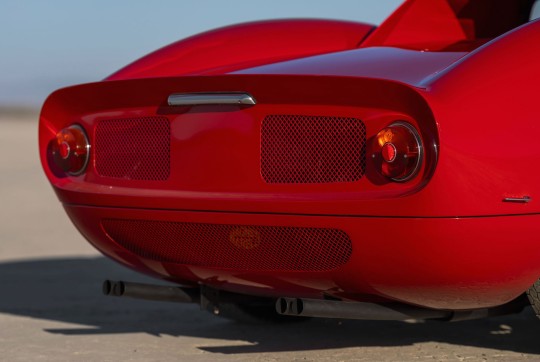

1964 Ferrari 250 LM by Scaglietti
Courtesy: RM Sotheby's
#art#design#supercars#luxurycars#supercar#luxurylifestyle#luxurycar#vintage cars#hypercars#hypercar#ferrari#ferrari 250 LM#rm sotheby's#1964#collectors#scaglietti
259 notes
·
View notes
Photo



LES MIS LETTERS IN ADAPTATION - A Chapter In Which They Adore Each Other , LM 1.3.6 ( I miserabili 1964)
Dahlia, as she ate, said in a low voice to Favourite, amid the uproar:—
“So you really idolize him deeply, that Blachevelle of yours?”
“I? I detest him,” replied Favourite in the same tone, seizing her fork again. “He is avaricious. I love the little fellow opposite me in my house. He is very nice, that young man; do you know him? One can see that he is an actor by profession. I love actors. As soon as he comes in, his mother says to him: ‘Ah! mon Dieu! my peace of mind is gone. There he goes with his shouting. But, my dear, you are splitting my head!’ So he goes up to rat-ridden garrets, to black holes, as high as he can mount, and there he sets to singing, declaiming, how do I know what? so that he can be heard downstairs! He earns twenty sous a day at an attorney’s by penning quibbles. He is the son of a former precentor of Saint-Jacques-du-Haut-Pas. Ah! he is very nice. He idolizes me so, that one day when he saw me making batter for some pancakes, he said to me: ‘Mamselle, make your gloves into fritters, and I will eat them.’ It is only artists who can say such things as that. Ah! he is very nice. I am in a fair way to go out of my head over that little fellow. Never mind; I tell Blachevelle that I adore him—how I lie! Hey! How I do lie!”
#Les Mis#Les Mis Letters#Les Miserables#Les Mis Letters in Adaptation#I Miserabili 1964#I Mis 1964#Les Mis 1964#Les Miserables 1964#Dahlia#Favourite#Zephine#LM 1.3.6#lesmisedit#lesmiserablesedit#imiserabiliedit#tvedit#pureanonedits
98 notes
·
View notes
Text
The Author who shut the Devil's Mouth
If humans had taglines, what would yours be?
The Author who shut the Devil’s Mouth.
The spirit of KALAGA
The Author who shut the Devil’s Mouth
Original Dark Chocolate
Lookin in the Eye
Sherlock Holmes
The Opening Scene of Kalaga- Value of Time
WordPress

View On WordPress
#dailyprompt#dailyprompt-1964#Gold Silvano comics#KALAGA LM JAYARAJ#the author who shut the Devil&039;s Mouth
0 notes
Text
1964: Ferrari 250 LM
2000: Ferrari F1
1970: Ferrari 512 M

273 notes
·
View notes
Text


















Ferrari 250 LM 1964 châssis 6053. - source Motor Authority.
166 notes
·
View notes
Photo


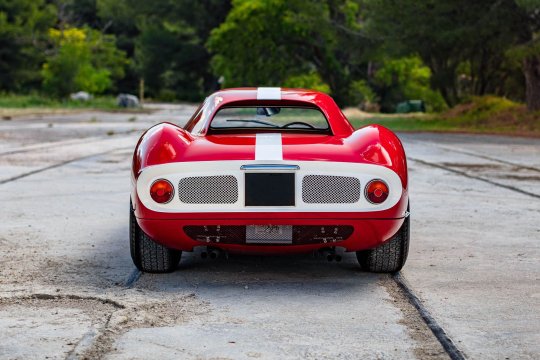
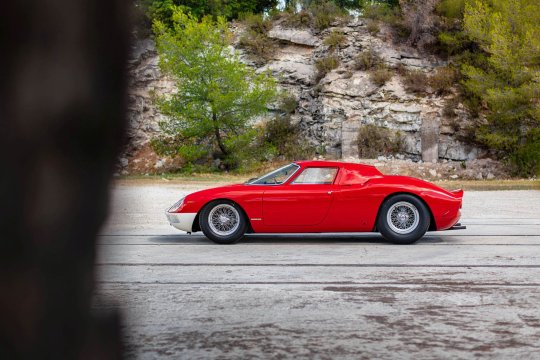
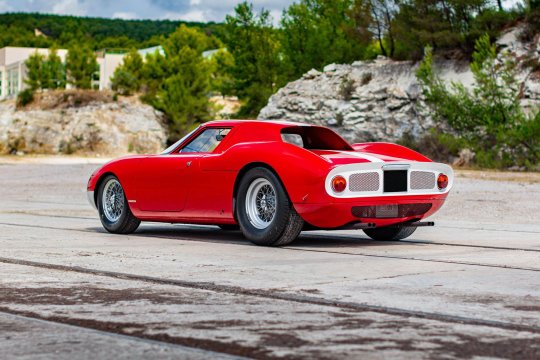

1963 Ferrari 250 LM.
Unveiled at the Paris Motor Show in October 1963, the 250 LM was a berlinetta version of the 250 P, which already boasted several victories in competition, before going on to win at Le Mans in 1964. Designed under the direction of the chief engineer Carlo Chiti, it was the first competition Ferrari with a centrally-mounted V12 engine.
330 notes
·
View notes
Photo








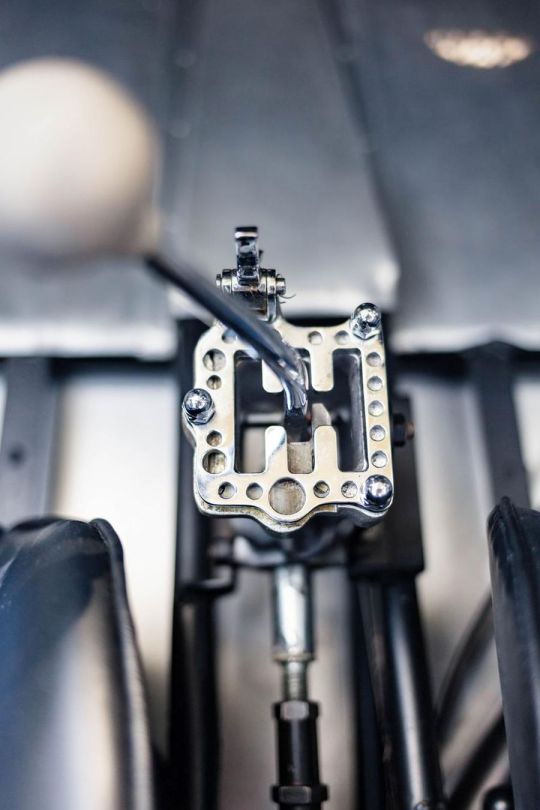

Ferrari 250 LM ( 1of 30)
It is a unit from the year 1964, with the chassis number #590 and which is one of the 10 units that survive of this model without suffering damage in its passage through the competition of the 32 that Ferrari came to produce of the model in its Maranello factory. Originally ordered in 1964 by Luigi Chinetti to compete under the colors of the NART (North American Racing Team) team in various series and races in the USA, the car was finally delivered brand new to its first owner in Philadelphia and recovered. later by Luigi Chineti to make it run in the 24 hours of Daytona, although the car would never compete on the track. It is therefore a truly exceptional unit, since it is not only in perfect condition, but its components are entirely original . Chassis, engine, gearbox, transmission and obviously the bodywork signed by Scaglietti are completely original. The 250 LM is one of the great myths of Ferrari. It was the last of the brand's models to win the podium at the 24 Hours of Le Mans in 1965 with Masten Gregory and Jochen Rindt at the wheel. That victory, Ferrari's ninth in the legendary endurance race, would close a brilliant cycle that began in 1960, in which the brand of the prancing horse would chain six consecutive victories at Le Mans. Despite this, the Ferrari 250 LM ultimately did not turn out to be the triumphant vehicle that Enzo Ferrari sought to put on the market as a Gran Turismo vehicle. . Its design is based on that of the 250 P prototype, integrating an additional roof into it that makes it a two-seater berlinetta. It maintains the tubular chassis, the same one that was mounted on the 250 LM from the second unit produced, as well as the iconic Ferrari V12 engine, in its 3,285 cm3 configuration with the V of its cylinder banks open at 60°. Certainly curious data if we look at the name of the vehicle, taken from the first unit produced, which did have a mechanical unit with only a 3-liter capacity, the only one with such a specification in the entire series produced. Atmospheric and with six double-body carburettors, the engine developed 320 CV of maximum power whose torque was transmitted to the asphalt through a 4 or 5-speed manual transmission arranged behind the rear axle of the vehicle.
57 notes
·
View notes
Text
The Sudrian Halls (and the tiniest bit about Duck and Casey) [NWR AU]

History
In 1935, the NWR entered into a locomotive loan contract with the Great Western in exchange for the sole right to supply coal to the railway for ten years. The locomotives sent to the North Western under this agreement were No. 4907 "Broughton Hall", No. 4915 "Condover Hall", No. 4911 "Bowden Hall" and No. 5948 "Siddington Hall". Also included in this deal was 5700 No. 5741, who would later become known as Duck.
The five GWR engines were stabled at Vicarstown Sheds with the LMS and ex-Furness residents, often having very loud arguments that kept the town awake. The four Halls were put to work on mixed-traffic and thunderbird duties while Duck was assigned to pilot duties, working tirelessly through the war. During 1941, Bowden Hall was recalled to the GWR to assist with the workload. Unfortunately however, he was struck by a bomb at Keyham and disposed of at Swindon Works.
After the war, the now trio of Halls were supplemented with Stanier Class 5 No. 5113, known as Casey. They continued to work diligently until 1963, when word started to spread of the Western Region recalling locomotives to Swindon Works for scrap. Not too keen on letting this happen to engines he considered part of his railway, Sir Charles Topham Hatt II purchased Condover, Siddington and Broughton, along with Casey too. The four were sent to Crovan's Gate to be repainted and lightly overhauled ready for service. While there however, the three 4900s decided they wanted to start anew. After all, they were NWR engines now. It was Condover Hall who asked Sir Topham if the trio could change their names, and he fully obliged. Condover Hall became Vicarstown Hall, Broughton Hall became Knapford Hall and Siddington Hall became Tidmouth Hall. Under these new names, the three re-entered service in 1964 and have served without fault ever since
Personalities
Vicarstown Hall is an amiable, friendly and cheeky chap who likes to have a laugh. He gets on very well with younger or sillier engines like Bill, Ben, Percy or Thomas, but is rarely allowed to interact with them due to the chaos that usually ensues. He works as hard as he plays, being a mainstay of the island's passenger and goods services.
Quite the opposite to her brother, Knapford Hall is an uptight, strict and by-the-book sort, not tolerating other engines stepping out of line even by an inch. This often puts her at odds with Vicarstown Hall, who thinks she's something of a stick-in-the-mud. Her work ethic is as strong as her anger for those who don't follow every single rule in the book, and trust me, she knows them all.
Rounding out the trio is Tidmouth Hall, one of the railway's designated thunderbird engines. Being a thunderbird engine is something he takes incredibly seriously, not having much patience for those who belittle or mock his work. Other than this, he's very friendly, caring, compassionate and trusting, though his trust and compassion can sometimes get him hurt.
All in all, the trio are a big cog in the clockwork mechanism of Sodor's railway system, doing whatever is assigned to them (for the most part) without fuss.
Thank you for reading, I'll see you in the next one.
Cheerio!
4 notes
·
View notes
Text


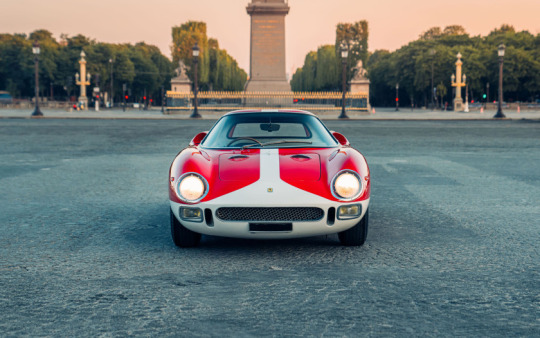
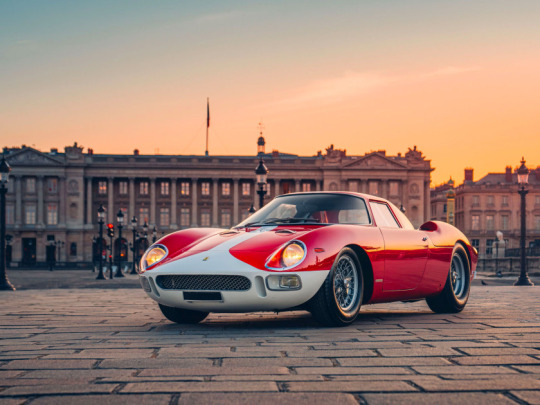
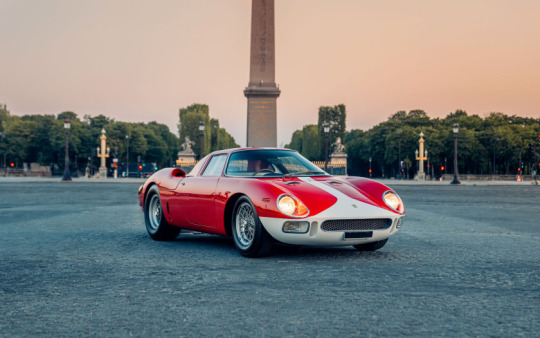
1964 Ferrari 250 LM Berlinetta by Pininfarina
Chassis No. 5901
Engine No. 5901
Internal number 138/LM
Gearbox No. 18
- 2023: 60th anniversary of the Ferrari 250 LM
- One of the absolute masterpieces in the history of the Automobile
- The 10th Ferrari 250 LM on only 32 copies built
- Rarer than a 250 GTO
- A real milestone in Ferrari history: the first car of the brand with a V12 engine in the rear center position, the last to win the 24 Hours of Le Mans before 2023!
- With Ferrari's victory at the hundredth edition of the 24 Hours of Le Mans 2023, the 250 LM is now part of a fantastic saga whose future remains to be written
- Matching numbers (chamber, engine, box, bodywork)
- History followed, restored in 1998/1999 by DK Engineering
- In a major French collection from 2002 to 2022
- Validated by the Ferrari Classiche committee, with a view to its certification
FERRARI 250 LM - MODEL PRESENTATION
Unveiled at the Paris Salon in October 1963, the 250 LM is a berlinette version of the 250 P which, presented in the previous March, can already boast of many successes in the race, before a victory at Le Mans in 1964. Designed under the authority of Chief Engineer Carlo Chiti, it is the first competition Ferrari with a V12 engine in a central position. The 246 SP inaugurated this new architecture in 1961, but with a V6 engine.
For the 250 LM, Scaglietti has signed a masterful shape, whose tapered front draws an amazing contrast with the long and muscular back that reveals the presence of powerful mechanics. The small central arch brings lightness to the pavilion, and one of the most spectacular elements is the vast hood that rises like a cathedral to reveal the bowels of this radical machine.
With the 250 LM, Enzo Ferrari wants to take over from the 250 GTO and have it homologated in GT. But if FIA officials have turned a blind eye to the Commendatore's tendentious arguments that allowed the homologation of the 250 GTO (which he had announced as a simple evolution of the 250 GT), this time they do not let themselves go and demand the production of the 100 copies required. However, Ferrari will only produce 32, so that the 250 LM will remain in the "Prototypes" category and will have to compete against more powerful cars, the most emblematic of which will be the Ford GT40 mentioned above. Glorious protagonist of the Ford-Ferrari duel, the 250 LM beautifully defended the colors of the Italian manufacturer by compensating for its power deficit with qualities of handling and maneuverability that were lacking in other more powerful cars. Carlo Chiti had seen it right by managing to convince Enzo Ferrari to switch to the rear engine, when he was reluctant.
Moreover, the 250 LM should have been called 275 LM (according to the Ferrari nomenclature using the unit displacement) because after the copy of the Paris Motor Show, the following ones received a 3.3 Liter engine; hoping to deceive the vigilance of the FIA for the reasons mentioned above, Enzo Ferrari wanted to keep the name 250.
Given its design, the 250 LM was intended for the track much more than for the road, and most of the copies produced have experienced the throes of competition and its hazards. However, this is not the case with the car we present, whose career took place in the hands of individuals and collectors who have never engaged it in the race. It was certainly present in 1966 at the 24 Hours of Daytona, but as a simple reserve car. This is why it is now beautifully preserved of origin, as we will see later.
THE FERRARI 250 LM OF THE SALE, #5901
The complete history of this work of art is established and documented by brand specialist Marcel Massini. According to the manufacturing sheet of this 250 LM, its tubular chassis was supplied to the Scaglietti bodywork in Modena on June 24, 1964. On September 18, the assembly of the engine, carried out by mechanic Baschieri, was completed under the control of foreman Amos Franchini. It was the same Amos Franchini who supervised the assembly of the gearbox, completed on September 23 by Ivo Giusti. The official order of Luigi Chinetti, boss of the N.A.R.T. (North American Racing Team) and importer of the brand based in New York, dated the following November 6, followed on the 14th by the manufacturer's invoice. On November 20, the car was transported to the port of Livorno and embarked on board the cargo ship Maria Costa, which then left for New York. After his arrival, the car was sold by Chinetti to its first owner, Raymond John Augusterfer, residing in Philadelphia.
On February 5 and 6, 1966, this Ferrari 250 LM was used as a reserve car for the 24 Hours of Daytona by the N.A.R.T., but no damage having stopped the engaged cars, it will not take part in the race and will remain in the paddock. The following year, Luigi Chinetti took over the car and sold it in 1968 to George Arents, from Warren, then in 1969 to Walter and Irene Young, from Wilton. After a visit to Kirk F. White Motorcars (Philadelphia), the car was bought on June 29, 1970 by William B. Rearden (Villanova, Pennsylvania), for the sum of $16,500 with, in soulte, his Ferrari 330 P Spider. Rearden kept her for eight years, while she appeared in issue 37 of Prancing Horse, the Ferrari Club of America bulletin, next to the 330 LMB and the Dino 246 GTS in her collection. Its owner also had the opportunity to use it on June 1, 1974 at the Ferrari club's annual meeting on the Lime Rock circuit, then at the Ferrari Parade organized as the opening of the Watkins Glen F1 race on October 5, 1975.
Artcurial
#ferrari#250LM#prancing horse#le mans#24 hours of Daytona#pinafarina#italian#Artcurial#sixteen million dollars
8 notes
·
View notes
Photo
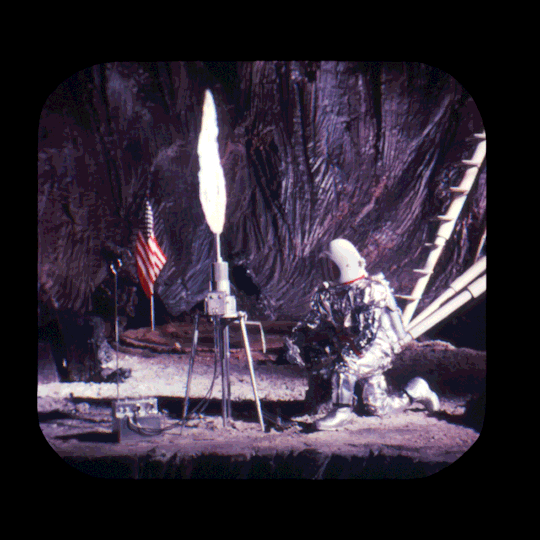
Caption: Eric’s drill tapped a source of real moon water!
Booklet Description:
MOON DISCOVERY!
When Doug returned to the LM, Eric eagerly announced: "I'm going out and strike oil!"
He took an electric core drill, powered by high-energy fuel cells, and set it up on the ground near the Bug. Then he looked around him and took a few steps in the low gravity. Exhilarated, he leaped 10 feet high, landing lightly.
"Ease off, Eric!" Doug commanded by radio. "If you tear your spacesuit, you'll be dead in seconds. Don't forget that you're walking in a complete vacuum, where the temperature ranges from 212 in the sunlight to minus 270 in the shade!" Soberly, Eric began drilling. Soon he felt a vibration in the nozzle of the drill -- and up shot a small geyser of steam!
Brand: View-Master
Packet Title: Project Apollo
Reel Title: Project Apollo, Man on the Moon
Reel Subtitle: Lunar Touchdown, Reel Two
Reel Number: B 6582
Reel Edition: A
Image Number: 13
Date: 1964
5 notes
·
View notes
Photo
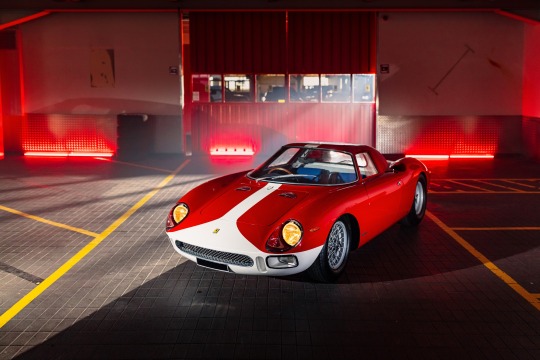




1964 Ferrari 250 LM
Introduced at the 1963 Paris Auto Show, the Ferrari 250 LM marked the Prancing Horse's redoubled efforts to win the 24 Hours of Le Mans.
Victory at Le Mans would come in 1965 with the North American Racing Team (NART) headed by hand-picked Ferrari importer three-time Le Mans winner Luigi Chinetti — last time Ferrari would take the overall win.
Only 32 of 250 LMs were produced, and this example, no. 5901, was the 10th built. It was purchased by NART but never raced. What it lacks in provenance it makes up for in perfection — the car has had a life of leisure no race car could imagine.
This 250 LM remains in immaculate condition, with it's original chassis, 3.3-liter V12, five-speed gearbox, and Pininfarina bodywork.
Courtesy: Artcurial
#art#design#sportcars#sportcar#vintagecars#vintagecar#ferrari#ferrari 250 LM#1964#collector's#pininfarina#artcurial#luxurycars#luxurycar#luxurylifestyle#le mans#NART
129 notes
·
View notes
Photo
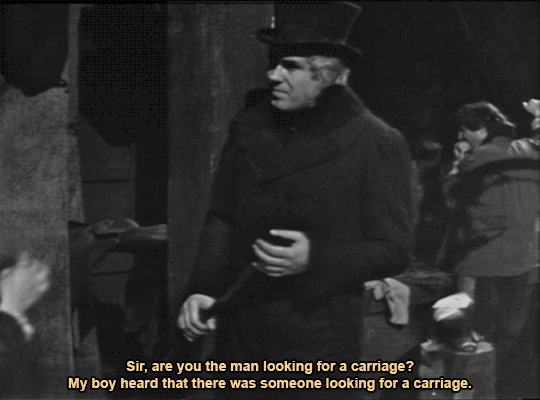
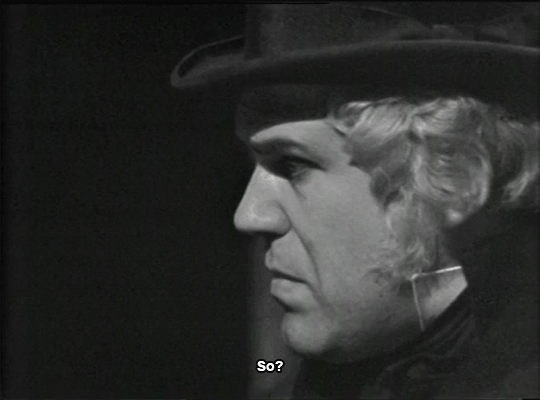
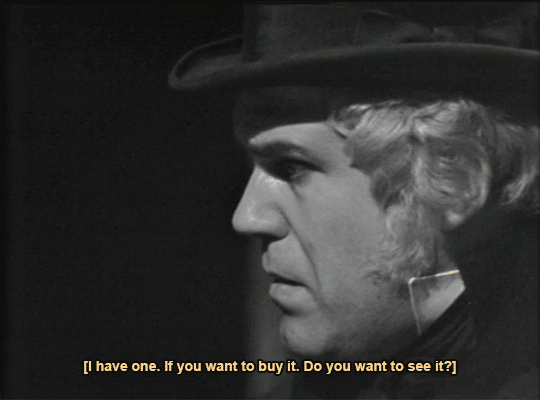
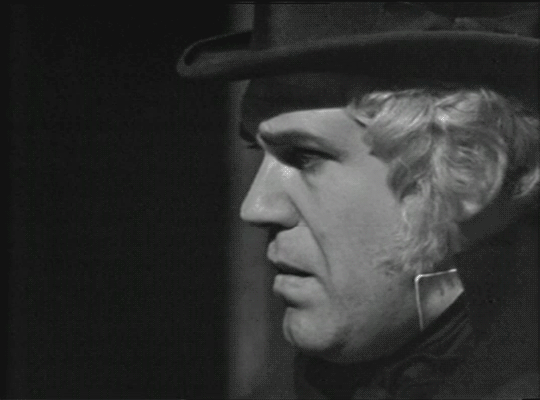

LES MIS LETTERS IN ADAPTATION - Hindrances, LM 1.7.5 ( I miserabili 1964)
“Monsieur,” said the woman, “my boy tells me that you wish to hire a cabriolet.”
These simple words uttered by an old woman led by a child made the perspiration trickle down his limbs. He thought that he beheld the hand which had relaxed its grasp reappear in the darkness behind him, ready to seize him once more.
He answered:—
“Yes, my good woman; I am in search of a cabriolet which I can hire.”
And he hastened to add:—
“But there is none in the place.”
“Certainly there is,” said the old woman.
“Where?” interpolated the wheelwright.
“At my house,” replied the old woman.
He shuddered. The fatal hand had grasped him again.
#Les Mis#Les Mis Letters#Les Mis Letters in Adaptation#Les Miserables#I Mis 1964#I Miserabili 1964#Jean Valjean#Valjean#Gastone Moschin#lesmisedit#lesmiserablesedit#imiserabili1964edit#tvedit#pureanonedits#LM 1.7.5
70 notes
·
View notes
Video
British Railways (ex LMS) 0-6-0 loco No. 44197 by Frederick McLean
Via Flickr:
An old amateur photograph of locomotive No. 44197, I think in the sidings at Skipton as that is the shed it was allocated to. The photo is stuck in a old rail enthusiast album, unfortunately there is no date or photographer name, but they do appear to date from 1950s/60s. This was a H. Fowler designed class 4F, 0-6-0 engine, built at the St. Rollox Works in Glasgow and new to the London, Midland & Scottish Railway (LMS) in Oct 1925, carrying No. 4197. In 1948 the railways were nationalised, becoming British Railways (BR), engine No. 4197 became No. 44197. The locomotive was withdrawn from service by BR in Sep 1964, then scrapped in January of the following year by Cohens of Cargo Fleet. If there are any errors in the above description please let me know. Thanks. 📷 Any photograph I post on Flickr is an original in my possession, nothing is ever copied/downloaded from another location. 📷 -------------------------------------------------
#H Fowler#class 4F#St. Rollox Works#0-6-0#4197#44197#London#Midland and Scottish Railway#LMS#BR#British Railways#British Rail#locomotive#old locomotive#steam locomotive#steam loco#vintage steam loco#steam engine#steam train#old photograph#old transport#vintage transport#vintage photograph#flickr
0 notes
